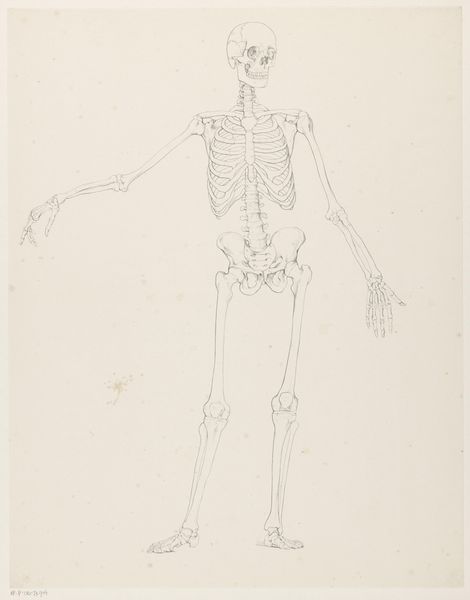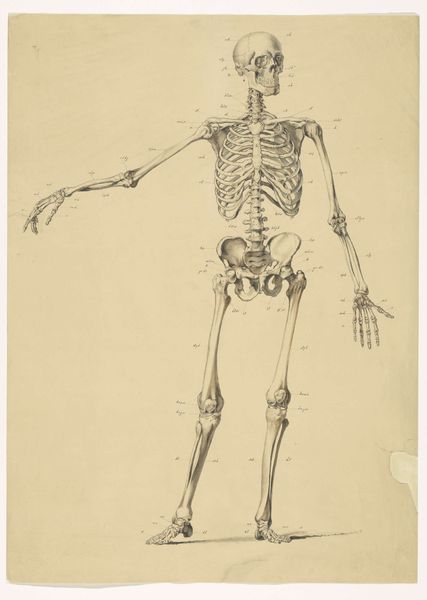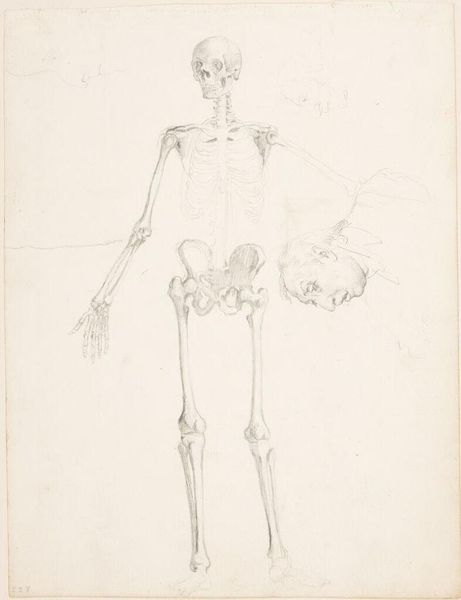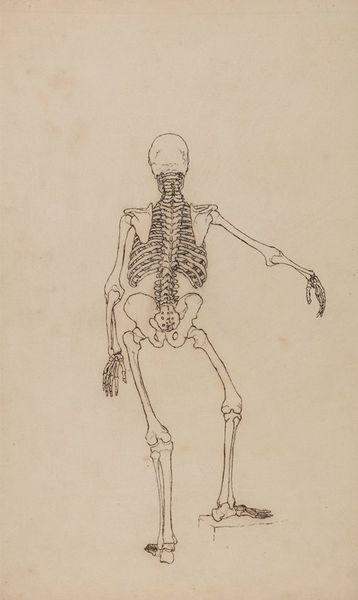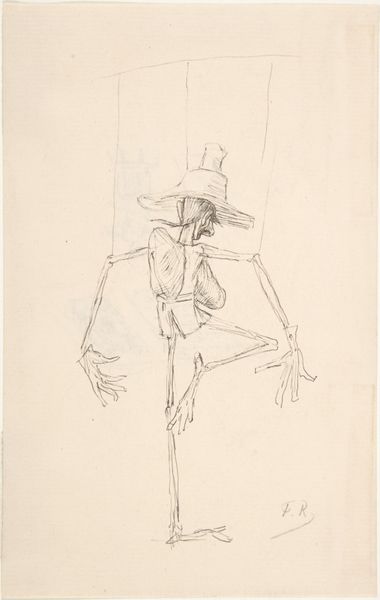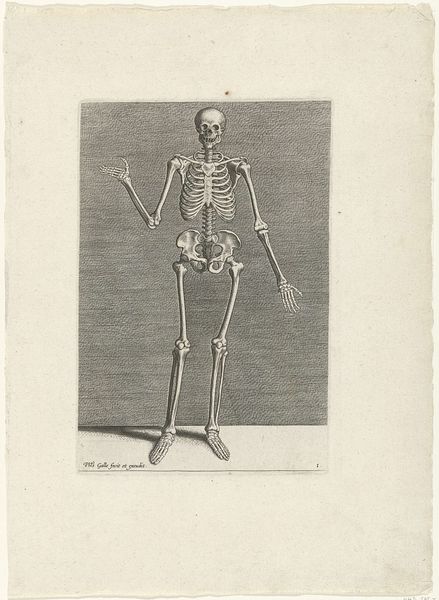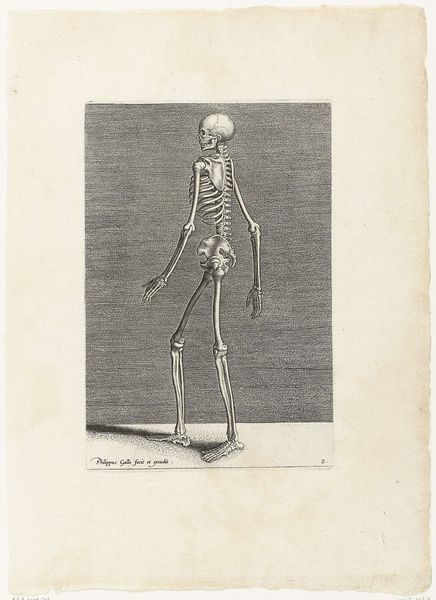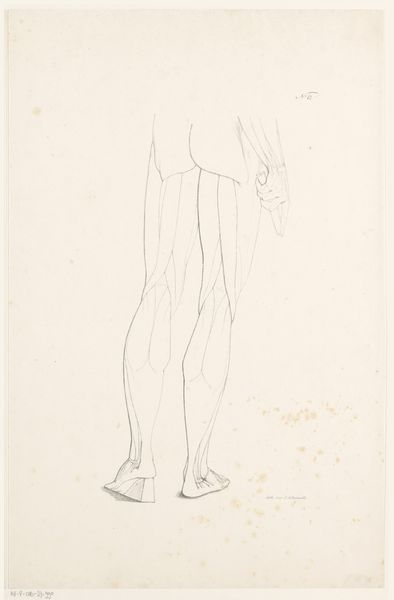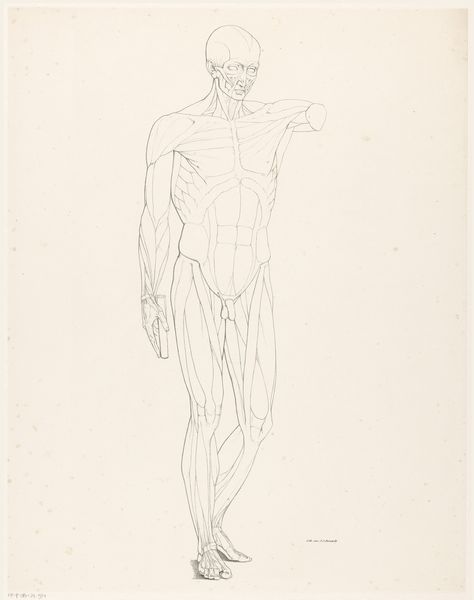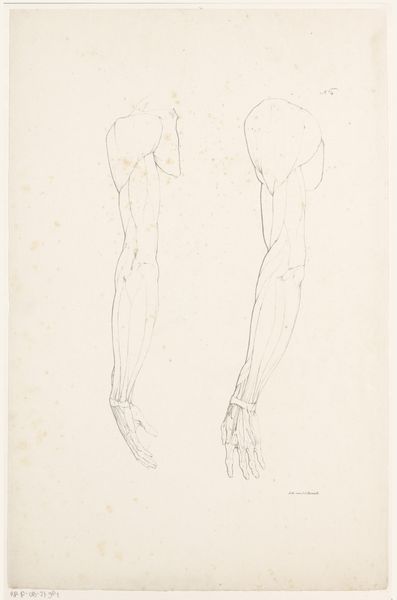
drawing, pencil
#
portrait
#
drawing
#
pencil sketch
#
figuration
#
pencil
#
history-painting
#
academic-art
#
nude
#
realism
Dimensions: height 545 mm, width 425 mm
Copyright: Rijks Museum: Open Domain
Jean Augustin Daiwaille’s delicate rendering of a "Menselijk skelet op de rug gezien" (Human skeleton seen from the back), was created in the Netherlands in the early 19th century. During this time, anatomical studies were vital for artists seeking to capture the human form accurately. This is more than a scientific drawing, it is an artistic expression. The artist's focus on the skeletal structure invites us to contemplate mortality and the human condition. Daiwaille highlights the underlying framework that supports our bodies, a framework that transcends identity. Gender, race, and class become irrelevant when confronted with the universality of our shared anatomy. Consider the artist's position at the time: a male artist working within a system that often excluded women from such direct anatomical studies. Daiwaille’s drawing serves as a reminder of the fragility and the strength inherent in our physical beings, challenging traditional representations of beauty and perfection.
Comments
No comments
Be the first to comment and join the conversation on the ultimate creative platform.
